How can you reduce the clutter in your home? How can you organize it?
1. The concept of life based on letting go
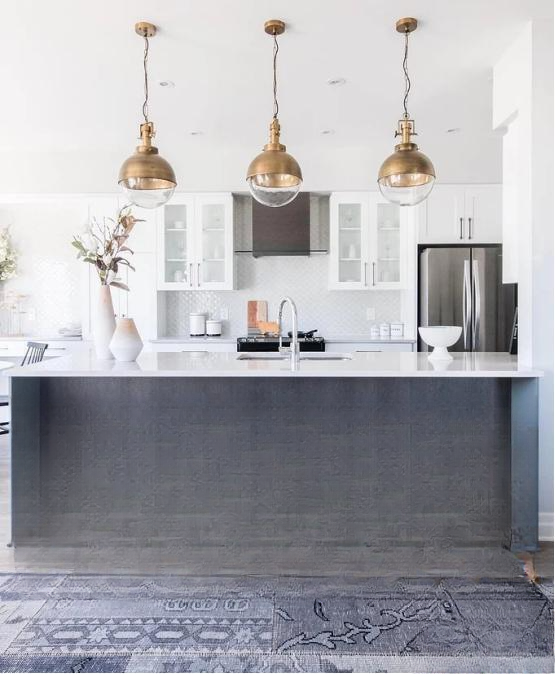
The philosophy of "Datsu-shō-ri" (a traditional Chinese ritual of discarding and relinquishing belongings) is a long-standing one. It involves promptly disposing of old items and discarding worthless items, rather than hoarding meaningless, old items. Regularly clearing out small items from your home, sorting them into categories, and reducing the amount of clutter will naturally keep your home free of unnecessary clutter.
2. Make good use of storage tools
△ Storage rack
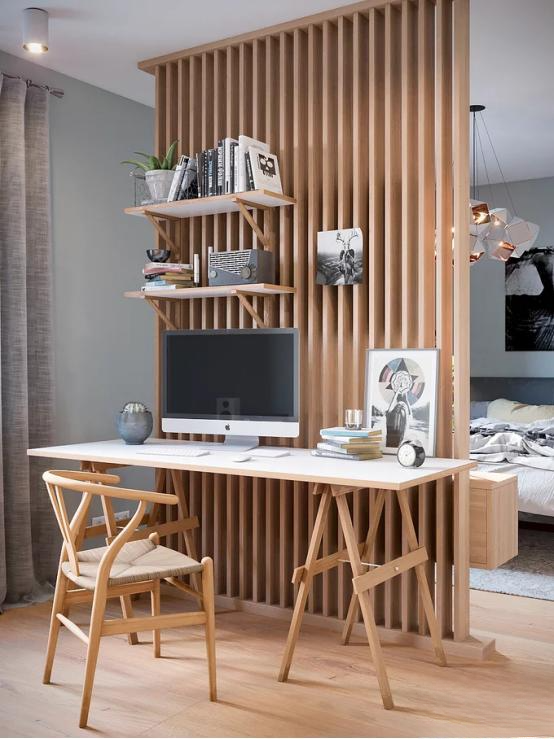
Shelves come in a variety of forms, including wall-mounted, floor-standing, and retractable racks. They can be placed on walls, floors, or underneath cabinets, freeing up more storage space without taking up additional space. Easy to install, compact and flexible, they're suitable for a variety of locations, meeting everyone's storage needs.
△ Hook
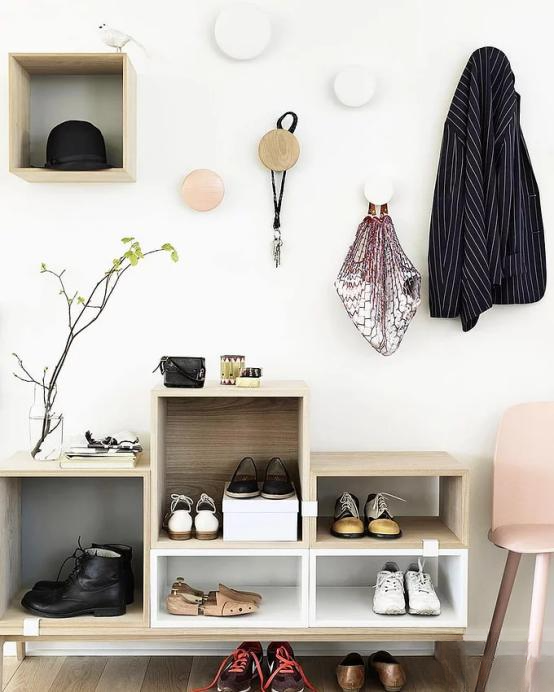
These hooks can be directly attached to the wall to store coats, bags, keys, and other small items. They're ideal for entryways, dining rooms, kitchens, and bedroom areas. Their sleek design complements the monotony of a blank wall and adds a cozy touch to any home. Combining practicality and aesthetics, these hooks are a must-have storage tool.
△ Perforated board, iron mesh
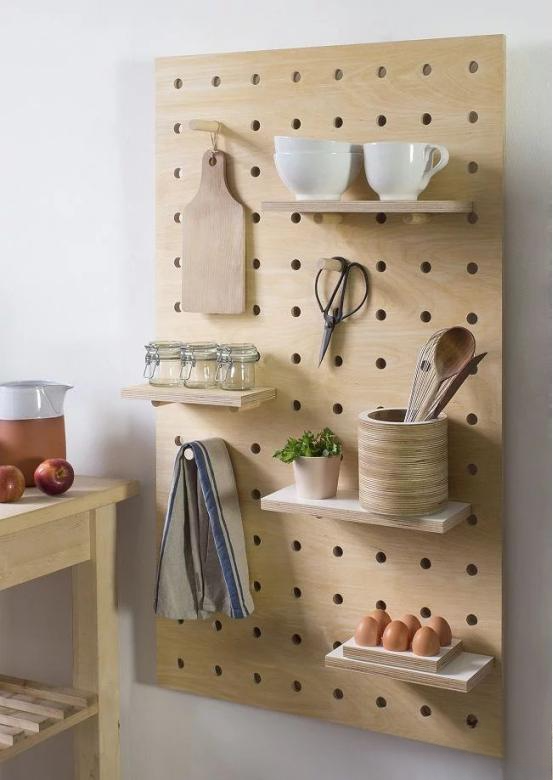
The pegboard, known as the "Internet celebrity", has a very high appearance. Under the natural wooden appearance, it hides a simple and rustic temperament. It is matched with partitions and wooden sticks to accommodate books, decorative paintings or other objects.
△ Quilt compression bag
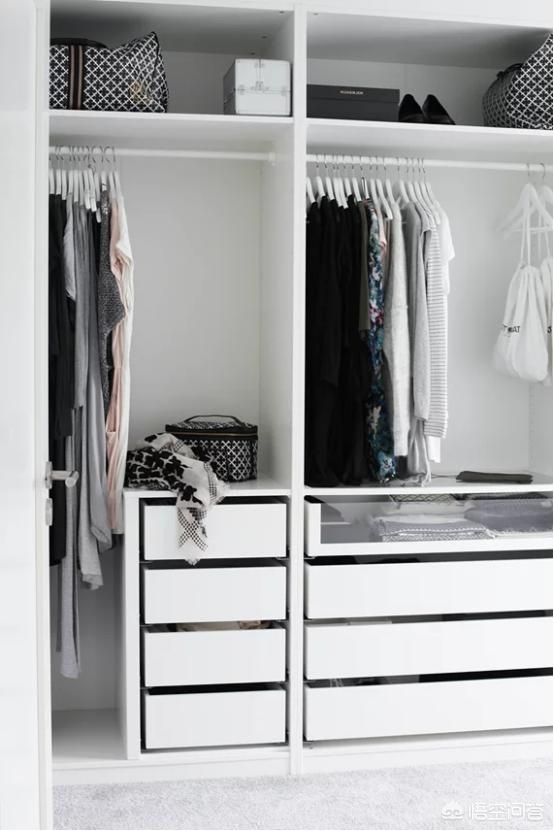
Bulky quilts often take up too much space if not compressed. Compression bags can reduce their bulk and stack them inside your wardrobe, restoring your bedroom to its original cleanliness and tidiness. Similarly, shoe bags and hangers can also serve as storage tools.
3. Utilize the corner space in the room
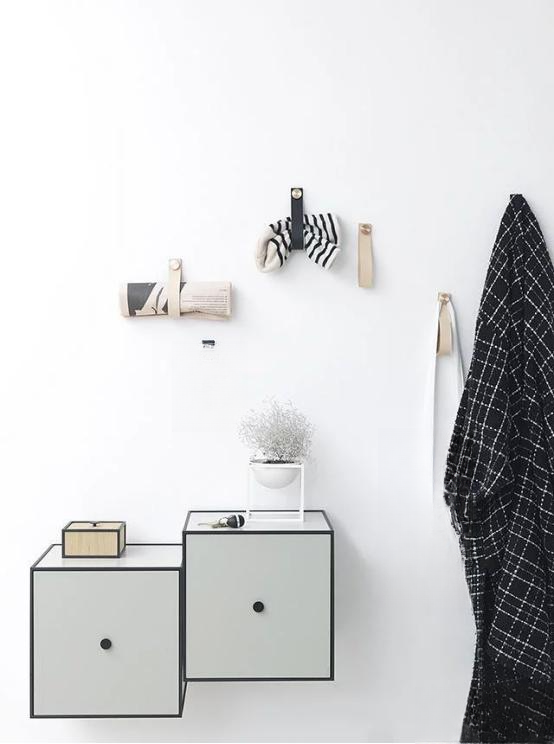
At the beginning of the design, it is necessary to rationally plan the storage space and carefully layout it to achieve the original intention of the design. There are many unexpected areas in the interior space. If the corner area is reasonably utilized, it can also be a good choice.
Here are the areas in your home that can be fully utilized.
△ Kitchen wall, under the sink
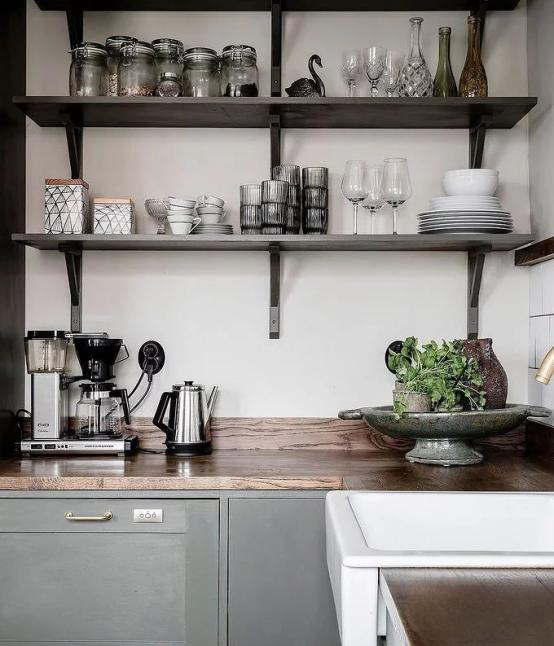
Above the worktop, a space of at least 50cm is typically reserved to dissipate cooking fumes. However, the wall near the stove is left blank, allowing hooks and racks to be added for storing cooking tools and seasonings. Under the sink, a retractable rack can be added to store pots and other appliances, freeing up space inside the cabinet.
△ Bathroom corner, above the toilet, mirror cabinet
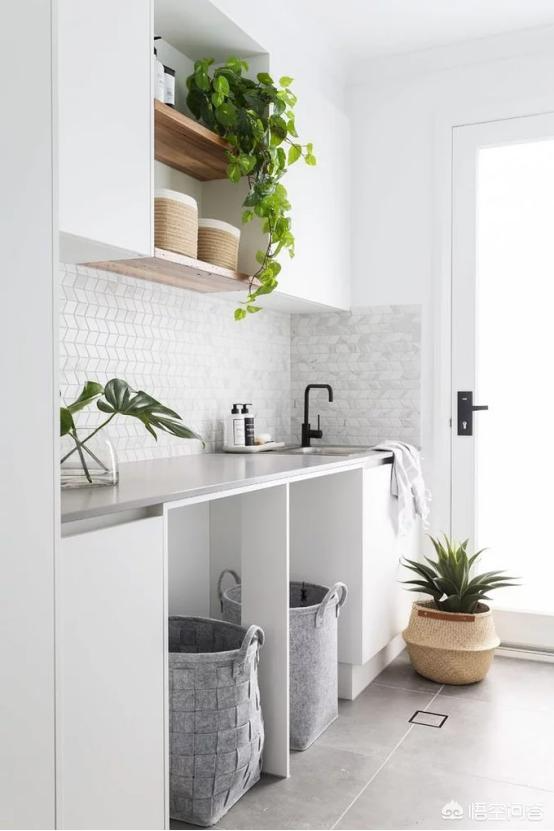
As a frequently visited place, the bathroom's interior layout impacts the living experience. In the bathroom, consider using the corner of the wash area to store toiletries, saving time walking back and forth. Alternatively, consider using the wall above the toilet to create a simple shelf for storing larger items. Mirrored cabinets and cabinets beneath the washbasin can also be used to store daily necessities.
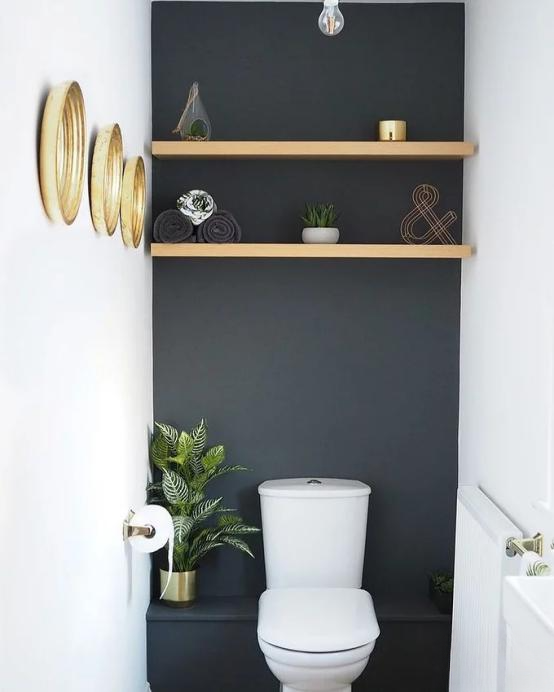
In people's minds, homes should be comfortable places to relax, with clean, open areas, rather than being overwhelmed by the accumulation of daily necessities. Making good use of the empty areas in the room and using storage tools to hide the clutter inside can restore the design to its original appearance.
It reminds me of Japanese minimalism, where everything you don’t need is thrown away.
Just keep the basic necessities, such as two or three pieces of clothing, and you don't need any fancy furniture.
My house is a mess. There are so many things in it that I can’t bear to throw anything away.
Every time I see the things people downstairs throw away are newer than ours, I always say, "They're so generous with their stuff, we're so stingy."
But when I really have to throw it away, I feel reluctant and the house is still as messy as before.
In fact, if you haven't used it for more than half a year, you can just throw it away.
I also like to buy and stock up, especially when there are discounts or free gifts.
Many times we know what to throw away, but we just can’t do it. This is a psychological problem and it’s difficult to deal with customer service.
The best thing to do is not to buy it.
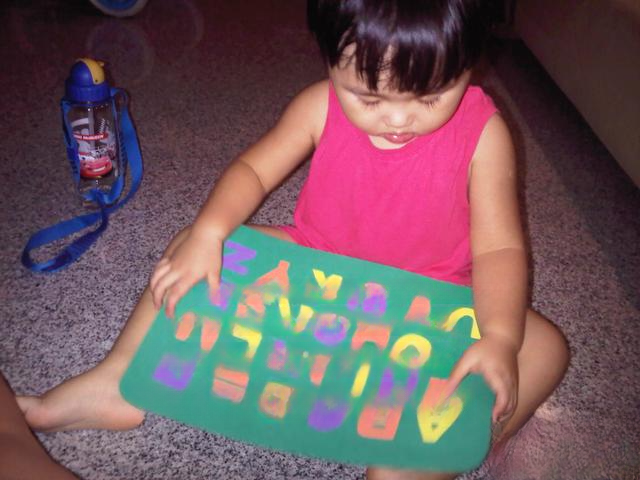
We actually don’t even use the sofa at home, but we just can’t bear to throw it away, hehe.
 Jiayuer's slow lifeCreators in the field of life
Jiayuer's slow lifeCreators in the field of life 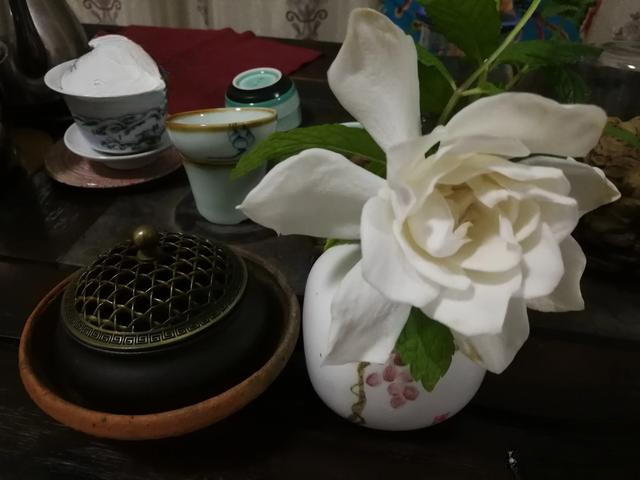
There's a lot of clutter in our homes, and we're reluctant to throw away some unused items, always wondering when they might be useful. How can we reduce the clutter in our homes and keep only the useful items? We can collect and organize them in the following ways.
First, clear out long-unused clutter. There are only a few items in our homes, big and small, that we truly use regularly, and some are just for show. For example, old fans, old computers, and other appliances—some of which we no longer use, we're reluctant to throw away, thinking it's a shame to throw them away, and they won't fetch much money as scrap. We also have old clothes that we haven't worn in years. We wash and dry them year after year before putting them back in the closets. Our closets are overflowing, and sometimes searching for a single item leads to rummaging through them. So, it's time to make a decisive effort to clear out long-unused, unused items. Once you clear out these unused items, your home will become less cluttered, cleaner, and more spacious, and you'll feel more relaxed and happy.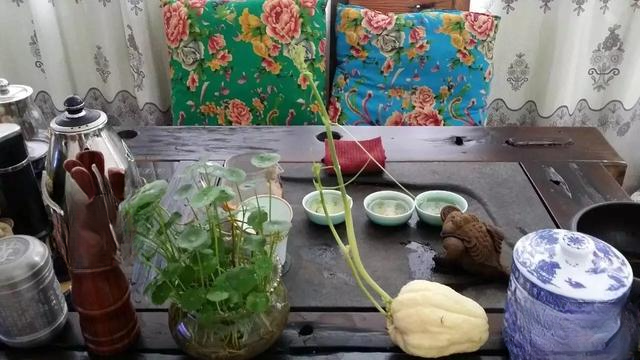
The second is to categorize and organize useful items. Organizing is a skill in itself. A clean, tidy, simple, and clear home demonstrates a strong sense of organization. Some families insist that tables, cabinets, and chairs be free of random piles of items, and that anything that can be placed in a cabinet must be placed there, ensuring the entire house appears neat, tidy, and clear, without a trace of clutter. Therefore, the importance of organization is closely tied to a person's lifestyle.
There are ways to organize things. First, categorize them. Place all similar items in one place. For example, put all shoes in a shoe cabinet, categorize all clothes in designated cabinets, put all pens in the same box, and keep all cosmetics in designated drawers. This way, similar items are easily visible, making them easier to find and helping you keep track of how much you have. Label them if possible. Secondly, try to organize items into cabinets and avoid leaving them outside, which can affect the overall appearance.
The third is to reduce purchases. To buy less, first, buy only what you need. Before buying something, ask yourself if you truly need it, whether you already have the same or similar items at home, and whether you'll actually need it after buying it. Women, in particular, often buy whatever they like. In reality, some items they buy may never be used, and some clothes may remain untagged for years. Whether from a thrifty household perspective or a shopping perspective, we need to be prudent in our shopping.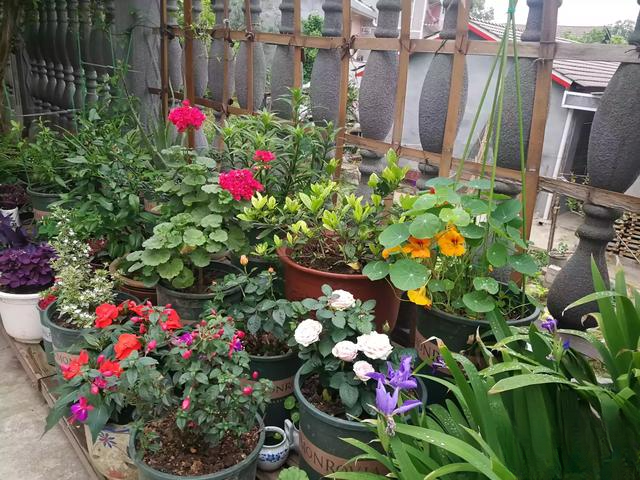
In short, the cleanliness and tidiness of a home still depends on yourself. Grasping the above points should make a lot of changes.
Learn to let go
The principles and process of letting go
First, clear out expired, damaged, or items not used for 3 years.
Second, "get rid of the hoarding self". Don't buy if you can avoid buying, and don't give up if you can avoid giving up. Gradually understand what you need, and finally have the courage to say no decisively.
Third, know how to cut off and cut off the source of unnecessary items!
Fourth, do you know how to clean clothes?
1⃣ No matter how much you like your old coat, it’s time to throw it away, because a decent appearance is more important!
2⃣ Faded pajamas. A new pair of brightly colored pajamas will make you feel better and avoid the embarrassment of unexpected guests!
3⃣ Say goodbye to shoes that rub your feet and make them uncomfortable as soon as possible!
4⃣ Jewelry that you buy but never wear may look sparkling when you buy it, but it will become dull and tangled if you neglect it for a long time. It is better to throw it away!
5⃣ Instead of wasting time and energy on white clothes and shoes that can’t be cleaned, it’s better to buy new ones. It’s not that expensive!
6⃣ If a broken bag is not a luxury item worth repairing, there is no need to keep it and let it take up space!
7⃣ Clothes/pants/skirts that don’t fit you and just take up space in your closet are better off being donated/given away/thrown away!
8⃣ If the underwear or bra you have worn for a long time becomes deformed, it will affect the wearing effect of outerwear. It is better to replace it with a new one!
9⃣ Clothes for special occasions, props or graduation dresses, performance costumes!
As a veteran housewife, I have some experience in answering this question.
Women have a natural possessiveness for things and often cannot control the desire to "buy, buy, buy". In addition, shopping on Taobao is convenient, so unknowingly, they hoard more and more things at home.
However, over time, I suddenly realized that the more things I have at home, the happier I am. Instead, I feel more and more annoyed when I see a house full of things.
I have always liked the “less is more” minimalist home style of Nordic and Japanese housewives. The warm and refreshing home environment is really pleasing to the eye.
By reading many books on home organization and after years of practice, I finally organized my home to the way I like it.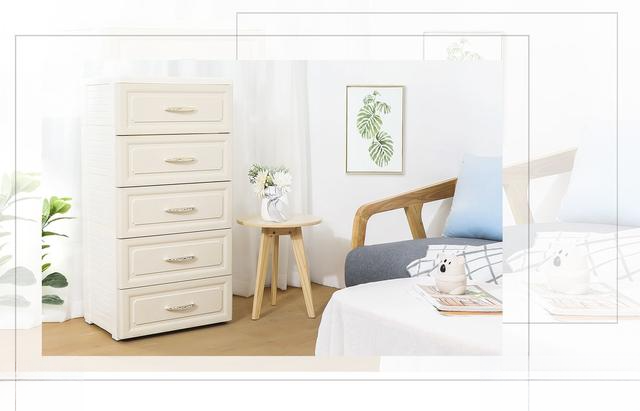
The following four methods are summarized:
First, get rid of items in your home that you haven’t used in a year.
The specific operations are as follows:
1. Make a list: Make a list of the things you have at home;2. Sort by categories: prepare several cardboard boxes and sort the items into categories.
3. Keep or Throw: List what to keep and what to throw away. Dispose of the discarded items promptly, either by selling them on a second-hand website, giving them away, or simply throwing them away.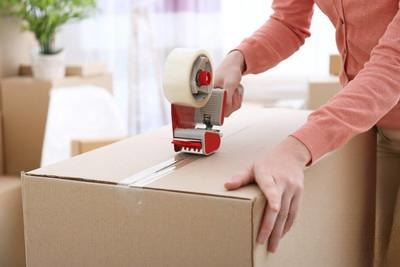
Second, the four principles of home storage.
1. Unified style: Home furnishings should not have more than three colors and should have a unified style.
2. No items on the desk: Try to place items in the cabinet to make the desk empty.
3. Seven empty and three full: Items placed outside should follow the principle of "seven empty and three full", that is, 70% should be left blank and 30% should be placed with beautiful and pleasing items.
4. Return items to their original places promptly: All items should be placed in fixed locations and returned to their original places promptly after being taken.
Third, there should be a fixed amount and quantity of items in the home.
Get rid of old items before buying new ones. Control your urge to buy more and calmly analyze whether you really need something before you buy.
Fourth, regular maintenance and cleaning.
Even the best things need care. Make it a habit to clean and dust your home daily; it only takes ten minutes.
The above are some of my home organization experiences, which may not be complete and thoughtful enough. You are welcome to leave a message to discuss.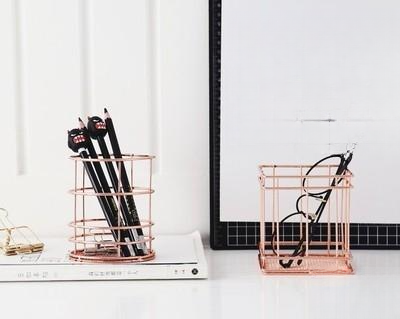
I'm Ni Yan Ni Yu, an older woman constantly striving to improve herself. I'm willing to share my emotional stories and family matters with you through writing. If you like my writing, please follow me.
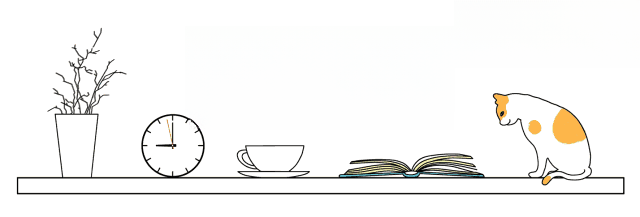
Nowadays, land in cities is becoming increasingly scarce, while the population is increasing. Housing prices are rising, and houses are becoming smaller and smaller. However, small houses still need to accommodate all the daily necessities related to food, clothing, housing, and transportation. If there is no method, the home will appear extremely crowded. So, how can the large requirements of a small house be met? This time, the editor of Decoration People brings you a complete set of home storage techniques and methods that are more important for small houses, for your reference.
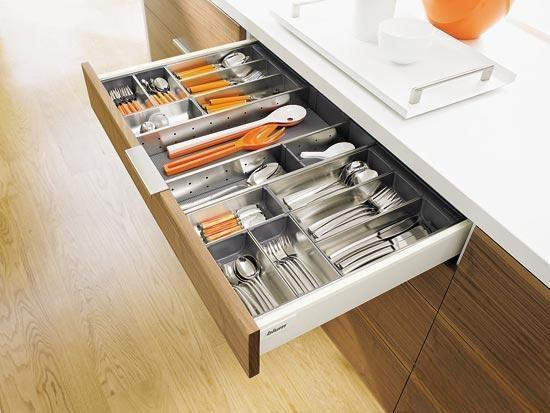
1. Display storage
When it comes to storage, many people's first thought is probably to put things away, but this is not all there is to storage. A home full of life interest often places equal emphasis on "collection" and "release", which can make the home a living scene full of details and imagery.
2. Clear classification
Before organizing, think about it and categorize your items into several categories: things you can easily access when you need them, household necessities, items you'd be reluctant to throw away, seasonal items, souvenirs, gifts, and items you've never used. Then, determine the order in which you'll organize them. Keep essential items within easy reach, and seldom-used items further away.
3. Appropriate customization
If the storage furniture does not always match the house type, you can consider choosing a customized way to make full use of the space according to local conditions. Whether it is neatly arranged shelves or uniquely shaped furniture, it can greatly solve the storage problem in the home.
4. Special things have their own special uses, and habits become second nature
By sorting and storing items, you will know the location of each item clearly and it will become a habit. The time spent on storage will be greatly reduced and it will be easy to keep your home clean and tidy.
5. Pay attention to the unity and parallelism of storage space
For example, when using cardboard boxes for storage, stacking boxes of different sizes horizontally or vertically is not only unsightly but also creates unnecessary gaps. Making them all the same size not only makes them easier to store and take out, but also creates a neat aesthetic through the uniformity of color, design, or material.
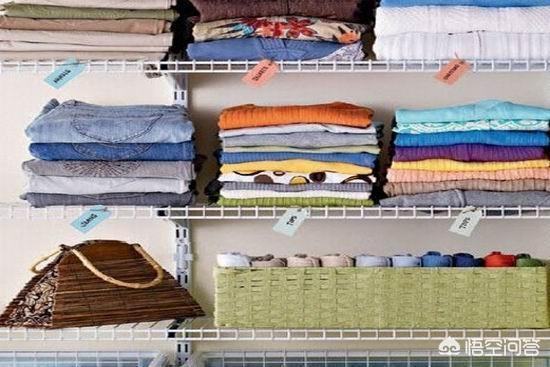
Here are some specific storage tips:
Tip 1: Take inventory of your daily necessities
1. Clear out and discard all the broken furniture, clothes, and sundries that should have been discarded long ago!
2. If you find it useless to keep or would rather throw it away, you can give it to someone else or sell it online!
3. Clean, derust and repaint old furniture.
4. Place things you use frequently where they are easily accessible, and put things you don’t use frequently in a deep place.
Tip 2: Category Management Hide vs. Display
Do you have so much stuff you don't know where to store it, leaving your home cluttered and disorganized? Learn the art of storage: what should be hidden or visible? Maximize the use of small spaces. Store colorful items in cabinets to create a unified home design. Give unique home accessories their own display space, adding the finishing touch to a tidy home.
Tip 3: Develop downward storage space
Spaces under sofas, tables and chairs, coffee tables, and beds, etc., can easily become dead corners where dust accumulates if not properly utilized. These spaces can be placed in beautiful, removable storage boxes with wheels, which can be pushed out when needed and pushed back after use. Additionally, a lift bed or a sofa with storage underneath the seat are good options for creating more storage space in a small space.
Tip 4: Develop upward storage space
Make more use of three-dimensional space: including walls, ceilings, and cabinets, which are all good storage places. These are very practical collection places, but they are easily forgotten by most people. You can also make more use of wall cabinets, hanging racks or wall shelves to increase wall space. This is the method of creating three-dimensional space.
Tip 5: Use of corner space
If there are gaps or corners between your cabinets and walls, try to utilize these small spaces by stacking appropriately sized storage boxes. Nailing a row of hooks on the back of a door panel will allow you to hang a lot of things.
Tip 6: Clothing Storage
Use open modular shelves as natural partitions. These modular shelves are usually easy to assemble and disassemble. When you move or want to move to another place, it does not take a lot of time to disassemble and assemble. It is a very flexible piece of furniture.
Tip 7: Kitchen Storage
1. When designing a kitchen, essential small appliances such as ovens, dishwashers, microwave ovens, and even large refrigerators can all be embedded between cabinets.
2. Display commonly used utensils on open shelves according to usage habits. This is not only convenient to use but also looks very refreshing.
3. The order of arrangement of storage cabinets, refrigerators, sinks, and stoves determines the cooking route. If you plan it by the three steps of storage, cleaning, and cooking, you won't waste time and energy by going around in circles.
Tip 8: Dining Room Storage
1. Use more storage boxes or organizers: Some small items or bottles that are easily covered by other things can be classified into different categories and then managed centrally using storage boxes or organizers, such as seasonings, jams, cream, food, etc.
2. Storage Racks: Effectively using storage racks in the refrigerator can significantly increase space. For example, using a plate rack allows you to stack plates, eliminating the need for stacking plates one on top of another, allowing you to store multiple plates. It's recommended to stand fruits and vegetables upright in the fruit and vegetable rack when refrigerating them, as this not only preserves their freshness but also prevents them from being squeezed.
Tip 9: Bathroom Storage
You can use bathroom corner racks, tripods and other hangers to fix it to the wall to place bottles and jars of toiletries that you use every day; or you can use a narrow cabinet of suitable size to store some bathroom supplies and cleaning products; the space above the toilet can be used with a special bathroom shelf to increase the storage space above the toilet and place towels, skin care products, etc.
Tip 10: Organize your children's room
A toy box with a board on top transforms it into a dedicated child's table. When putting toys away, simply pile them inside the box. Covering the board with cloth creates a more adorable interior. To ensure the board's stability, choose both the toy box and the board carefully.
The book "Learning Taste from a Parisian Lady" once said, "Save only the best." "Saving good things for later" is a common mistake. Don't make the same mistake again, because "later" almost never comes.
So how can we reduce the clutter in our home? I personally think this problem can be solved in two steps.
The first step is organizing. The core idea behind organizing is to spread out all items of the same category and then sort them back one by one. Start by categorizing your belongings, using labels like clothes, books, electronics, toiletries, bedding, etc. When organizing, be decisive in letting go. A good rule of thumb is to decisively dispose of anything you haven't used in two years. For most items, two years of unused storage is a safe bet. This step can help you get rid of a significant portion of your unused items.
The second step is storage. There are two key points for storage: first, vertical storage, and second, making good use of drawers.
Whether buying or renting a home, besides paying for location, square meters are crucial. In rental housing, where every inch of space is valuable, making the most of every square meter is crucial. Look around and see if you notice the spaciousness towards the top, while the lower floors become more cramped. If your living space is truly limited, consider dedicating an entire wall to storage. Maximize your frontage for storage. Three- or five-tiered storage racks are the go-to for frontage storage, and we strongly recommend one for every person.
As for why we should make good use of drawers for storage, it's because drawers are first and foremost moved out of a cabinet, thus satisfying the requirement for vertical space storage mentioned above. Secondly, we tend to put things on the ground. Why? Because a flat surface is more visually intuitive. Pulling out the drawer satisfies the visual needs of the flat surface. For small apartments and rentals with fewer cabinets, we need to give full play to our imagination and create drawers even if they don't exist. For example, go to IKEA or Taobao to buy a shelf, then add two storage boxes to it. What is this? It's your clever little drawer!
I believe that by using these two steps, the clutter in your home will become less and less, and it will become more and more orderly. If you think this answer is useful to you, please like it or follow it!
In our daily lives, we often feel that there are too many things at home and not enough storage space, which makes the room very messy. In fact, we buy a lot of things and leave them there after using them once. So how should we streamline the items and organize them?
My opinion: If you want to reduce the amount of clutter in your home, (1) I think it’s important to streamline your life. You can only gain something if you give up something. (2) How can you organize and sort things to increase storage space? (3) Developing good organizing habits is the key. The house will get bigger and bigger as you live in it.
Step 1: It is recommended to carry out a large-scale item streamlining action. Only by giving up can you gain.
1. First, sort out your belongings. You can take some time to decide which things are really useful and cannot be thrown away, and which are useless and can be thrown away or donated. You can make a preliminary classification based on the rules of very useful, generally useful, and really useless.
2. If the items that have been preliminarily classified are really useless, such as cardboard boxes, bottles and jars, sell those that can be sold first, and throw away those that cannot be sold first. Remove some items, and if these clothes, shoes, and toys are no longer needed, it is recommended that you go directly to the donation box in the community to organize and deliver them.
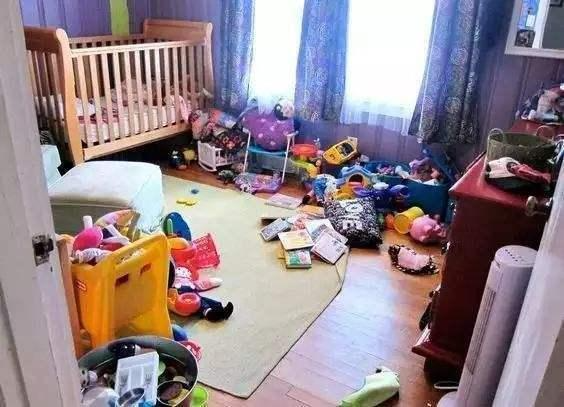
3. Throw away what should be thrown away, donate what should be donated, and then conduct the second classification according to the practicality, ornamental value, and necessary use of the items. Put the practical items back to their original place, improve the display effect of ornamental items, and store the necessary items in the same category.
Summary: I think that after several large-scale item streamlining actions, throwing away unusable items, donating items that can be used by others, and sorting and classifying frequently used items, such operations can reduce the clutter in the home and free up space for useful items. Only by giving can you gain.
Step 2: How to organize and store the streamlined items?
1. For example, you can buy some wooden partitions online for the living room. Be sure to choose ones with good quality and good appearance. In fact, they are similar to furniture, but they must be beautiful and practical at the same time. You can store and organize some items in the living room that cannot be thrown away, and it is convenient to take them out. For example, for the family’s drinking cups, we can buy some wooden trays and put the cups neatly together, which makes it convenient to take them out and does not make the space look messy.
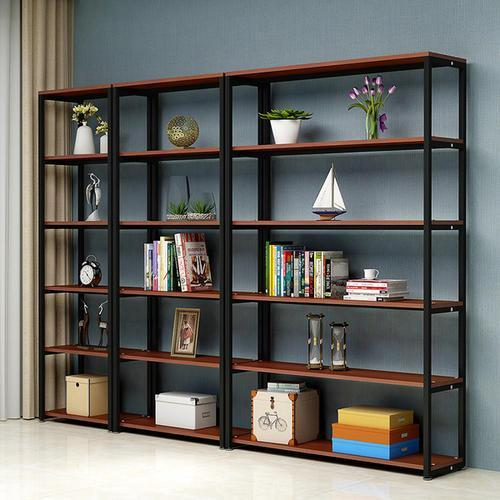
2. For example, on the balcony, without affecting other functions, you can also build some shelves on the wall, so that we can classify and store the organized items, and use multi-level space for storage, so that the space can be cleaner and less messy.
3. The kitchen is usually a place where furniture is easily messy and there are a lot of items, especially various small household appliances and pots and pans. You can buy a stainless steel storage rack online, with seven or eight layers. It is very convenient and practical to put pots and vegetables on it. After sorting it out, you will feel that the kitchen space will become larger.
4. There are usually a lot of sundries in the bathroom, especially a lot of basins, towels, and shampoos, which all need to be sorted and stored. At this time, you can buy some multi-functional storage racks online, and they will not appear messy after being sorted.
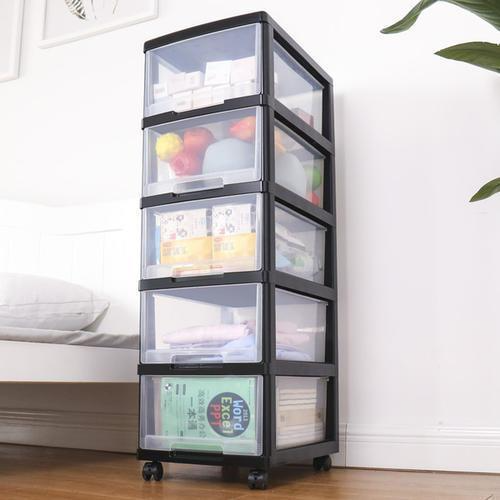
Summary: I think the step of organizing and storing is very important. Similar items can be classified and organized. By utilizing multiple levels of space, a lot of storage functions can be added, so that the home will not feel messy.
Step 3: Be sure to develop good habits of organizing things, and your house will become bigger and bigger as you live in it.
In fact, I think our lives need to be streamlined, especially when various items are not used but we are reluctant to throw them away, which has seriously affected the cleanliness of our home. At this time, we should develop good storage and tidying habits, learn to discard unused items, and learn to organize and store commonly used items. Only in this way will our home become bigger and bigger.
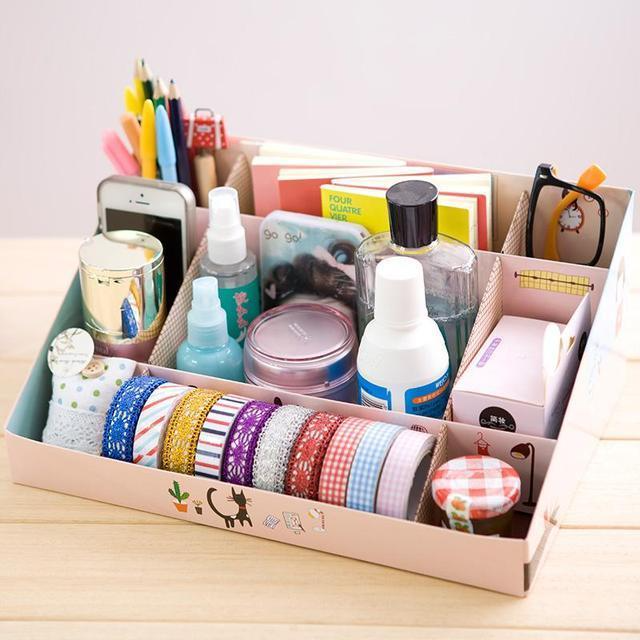
In summary:
Through large-scale item streamlining, increasing storage space through some storage methods, and developing good organization and storage habits, I have conducted analysis. I think this approach can reduce the clutter in your home. I hope my sharing can answer your questions.
The pictures are from the Internet. If there is any infringement, please contact us to delete them.
“less is more。”
This is my favorite phrase,
Designed by the architect Ludwig Mies van der Rohe.
Literally, less is more.
To interpret it more deeply, this is an attitude towards life.
Suppose we need to find a vivid example to illustrate this.
I believe many people will think of Japanese clutter consultant Eiko Yamashita.
The "Dansheli" lifestyle she created,
This should be another version of this sentence.
In her book, she describes the concept of letting go like this:
Cut off = don’t buy or take things you don’t need;
Get rid of useless things piled up at home;
Li = give up the obsession with material things,
Put yourself in a spacious, comfortable and free space.
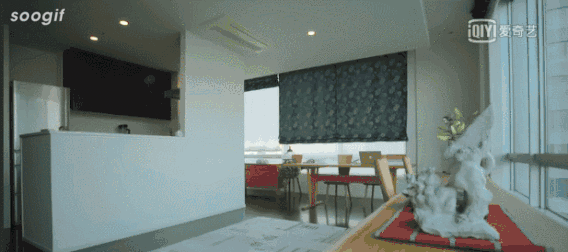
Yamashita Eiko's Room
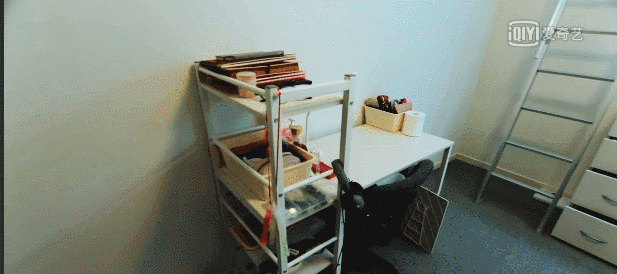
Her Fan Room
Therefore, letting go is also a life pursuit for some people.
However, the reality is that there are very few people who truly understand the mystery of it!
Some people simply equate letting go with throwing away.
Some people also regard storage as the essence of letting go.
Xiaomanjun's inner thoughts on letting go,
More understanding is about breaking off and separating, rather than giving up, let alone abandoning.
Of course, everyone's understanding of it is different.
Today, let’s talk about storage.
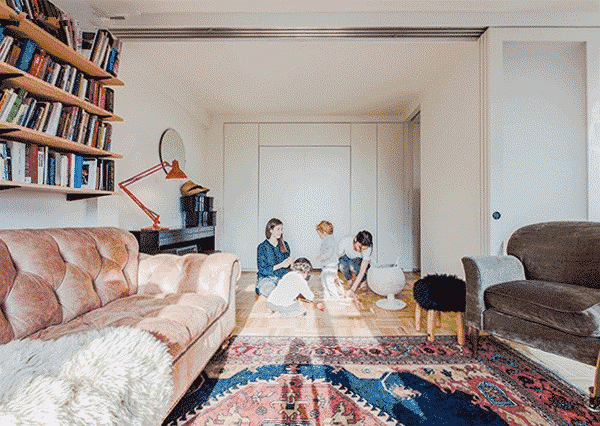
“Why is there never enough space for things?”
"Why do clothes grow on chairs after a while?"
“Why are there always odd numbers of socks in the closet?”
These are the three ultimate troubles of modern people that they have never been able to figure out.
Many people have read more than 100 articles on how to organize.
I can't even organize my own cabinets.
Why?
Because you only see the surface routines and don’t learn the essence.
House storage is like practicing Kung Fu.
The result of only practicing technical moves is just fancy moves.
You have to practice internal skills to be able to accept everything!
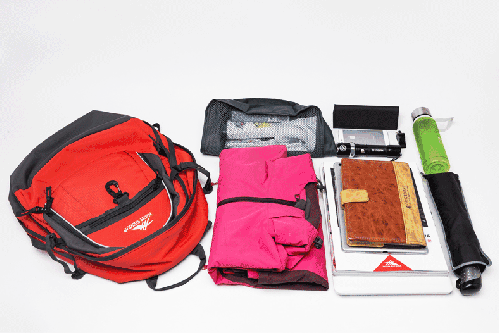
Why is Qiao Feng the best martial artist in the world?
It was all because of his profound internal strength that he was able to defeat three people at once.
Why did Hu Ge win the Best Actor award?
This is because of his excellent acting skills and of course his good looks.
Procrastination and laziness are common problems among modern young people.
That is why there is the famous saying:
“Deadline is the primary productive force”
If you want to learn the art of storage, you must first cure them.
How to treat it?
(As mothers often do: drag him out and give him a beating.)
But considering that everyone is an adult,
Everyone wants to save face, so they automatically block this method.
Serious storage class, now starting...

Part.1
Limited time and space
One of the reasons many people procrastinate is that the task is too difficult.
Let’s divide the task first, just like cutting a cake at a birthday party.
The 15-minute daily tidying method is very popular abroad.
For example, in these 15 minutes I only tidied my desk.
Or, I clean out the second drawer of my closet.
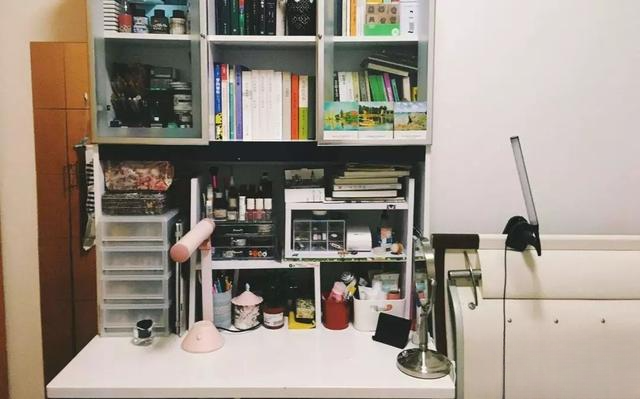
This limits time and space.
Hone yourself slowly and then develop a habit.
Part.2
Limited categories
Combined with the previous step, this time we will limit the categories of sorting.
For example, today I only organize
"Socks", "His clothes", "Baby's toys"...
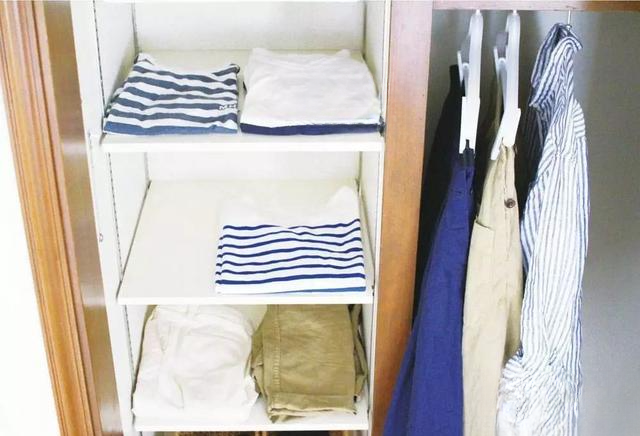
When sorting clothes, think to yourself: "Is this still wearable?"
Of course, the size principle can also be used when setting categories.
Part.3
Kill "Just Put It Down"
It is very dangerous to let it go casually.
So how do you kill this bad habit?
Change "put" to "hang", just hang it up.
It is convenient and does not take up floor space.
Especially for those who have children and elderly people living in the house.
It is easy to fall if you put it down carelessly.
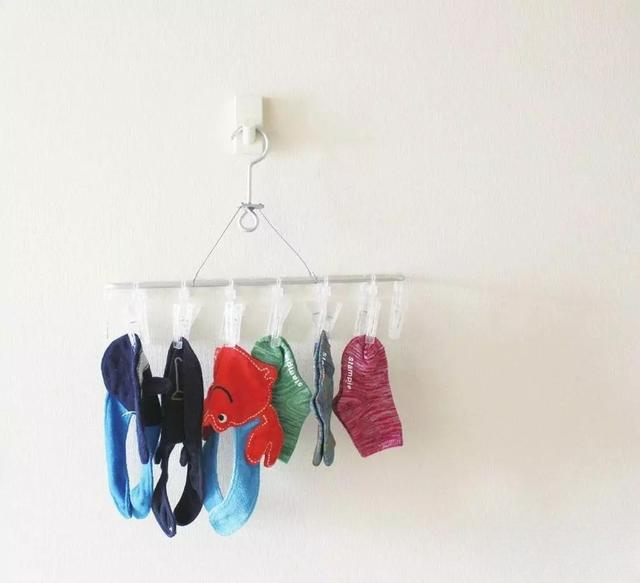
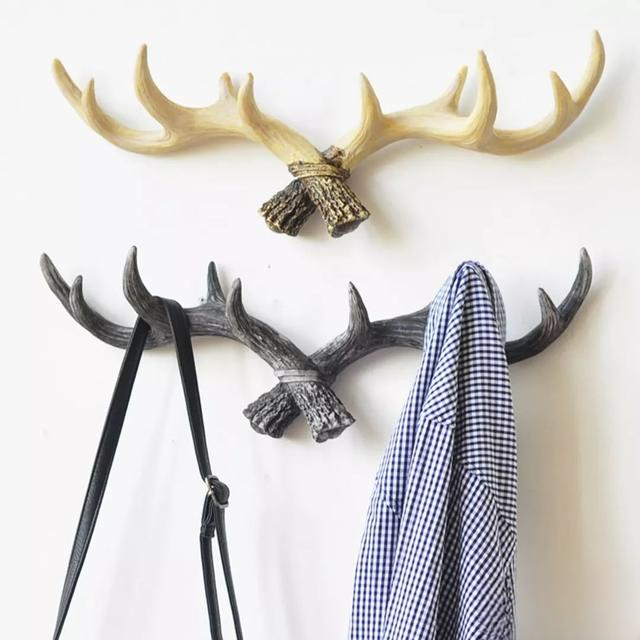
For example, an umbrella that was used up on a rainy day, a package that was just received...
The only cost of hanging things casually: buying different types of hooks.
I believe that you are more proficient in shopping than I am.
Part.4
Throw away the "waste"
I remember there is a line in the movie "Chungking Express":
I don't know when it started, but there are dates on everything.
Saury will expire, canned meat will expire
Even cling film will expire, I began to doubt
Is there anything in this world that never expires?
In the process of storage, you don't have to doubt
Most items expire.
Expired items must be thrown away immediately.
Especially medicines and cosmetics.
(Please help your elderly parents clean out their medicine cabinets too.)
Keeping it will only do harm, no good.
When a relationship expires, you know how to deal with it in time.
Why not throw away all the "waste" piled up at home and keep it for the New Year?

The above are the basic principles, which belong to internal skills.
Next, let’s start talking about practical skills, which are techniques.
Practical Guide: Kitchen Storage
Let’s make it clear: the kitchen is not a storage room
(Copy this sentence and write it down 100 times. It will be tested.)
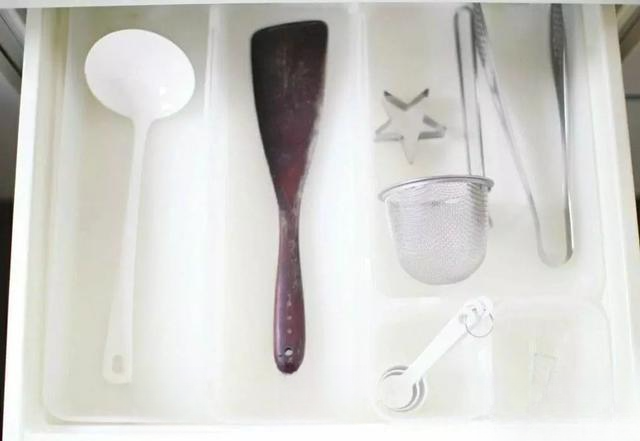
Cooking is an art and a lot of fun.
But there is a prerequisite, that is, the things in the kitchen must be clearly visible.
How to make items visible to the naked eye?
It can be stored in different areas according to our movement routes in the kitchen.
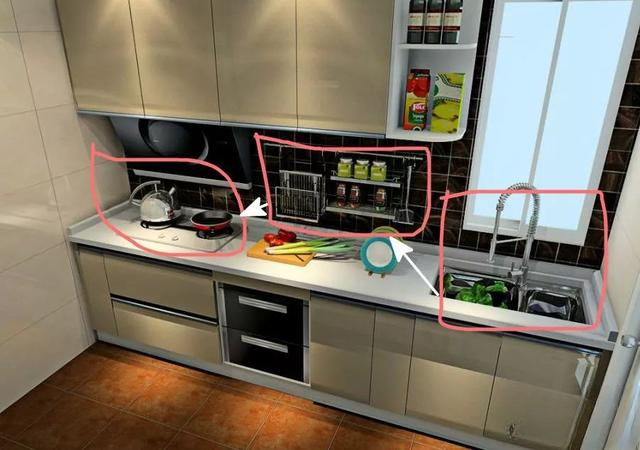
Xiaoman's route of action:
Wash vegetables➖Cut vegetables➖Cook vegetables
According to this action, the kitchen is basically divided into three areas:
Sink ring, countertop, stove ring, other rings
Placing things nearby is an important principle in the kitchen storage process.
The sink circle is a place for cleaning.
So, the related cleaning supplies, drain basket is here to stay.
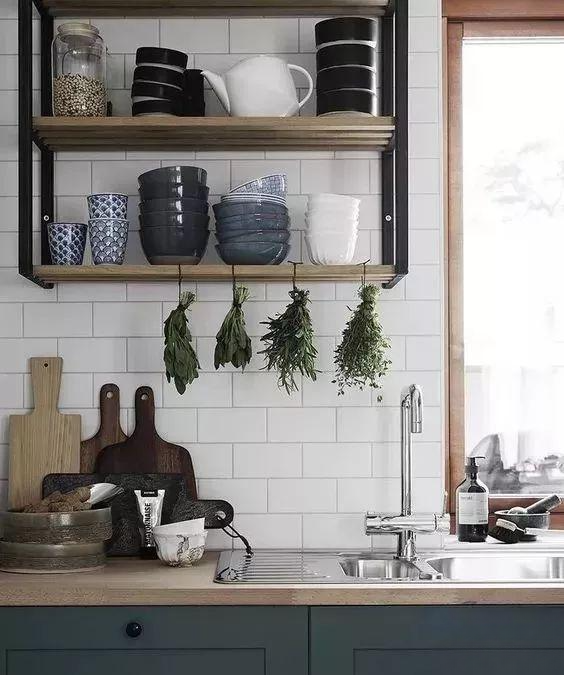
Countertop, for cutting vegetables.
Knives and cutting boards can be placed in this area.
(Don’t put other things here…)
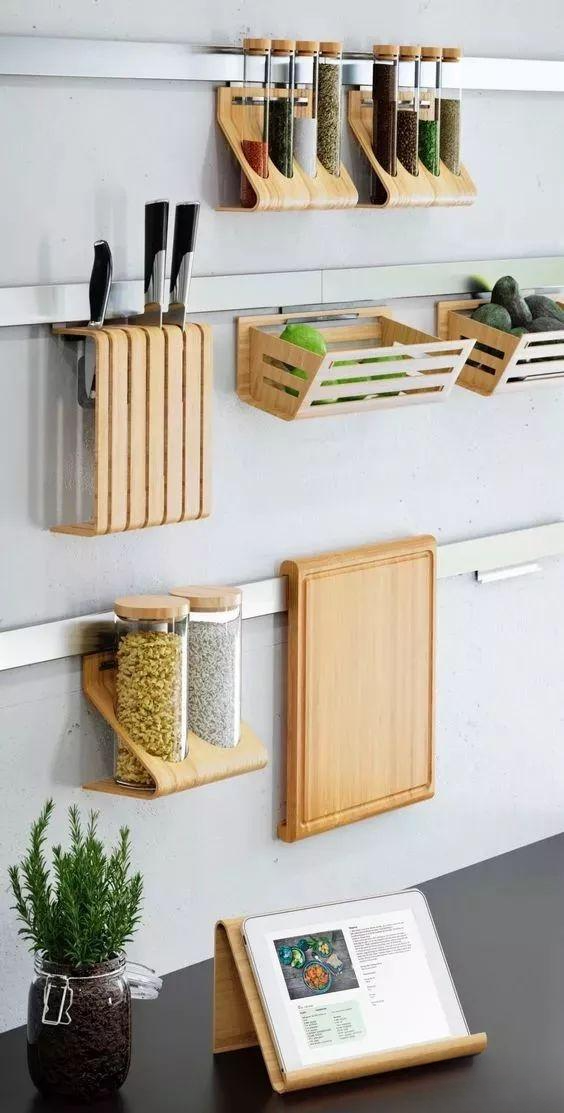
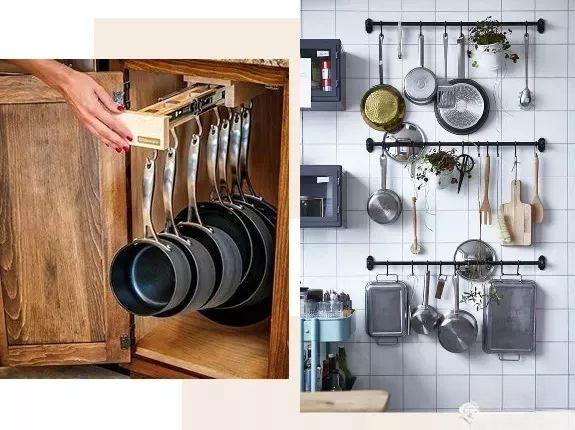
Anyone who cooks knows what to put near the stove.
You can add some storage boxes to put the ingredients in.
This way you don’t have to scramble to find ingredients when cooking.
Items that are not closely related to specific actions and are not urgently needed
Such as dry goods, grains, small appliances, etc.
You can arrange their positions according to the remaining storage space.
When storing items, you can follow the principle of "heavy on the bottom and light on the top" .
Heavy items such as rice and oil should be placed in the lower cabinets;
Light items such as cups, bowls and dishes can be placed in the upper cabinets;
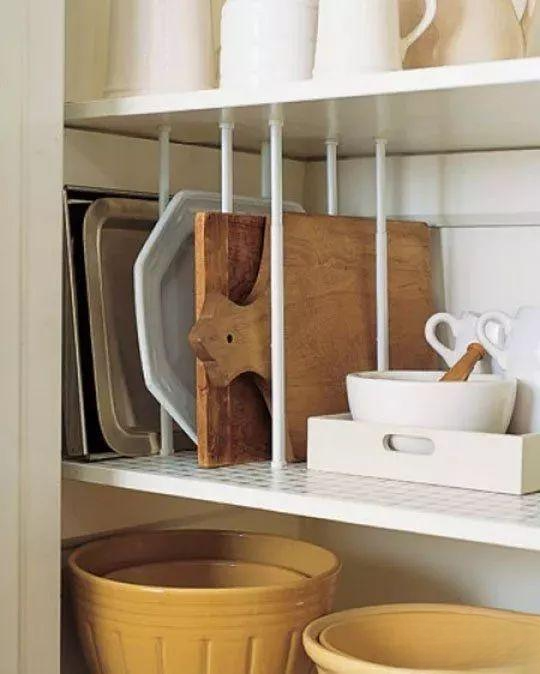
Bottles and jars are the most common items in the kitchen.
Especially some friends who have hobbies, such as collecting cups
There are five people in the family and there are 20 cups in the kitchen.
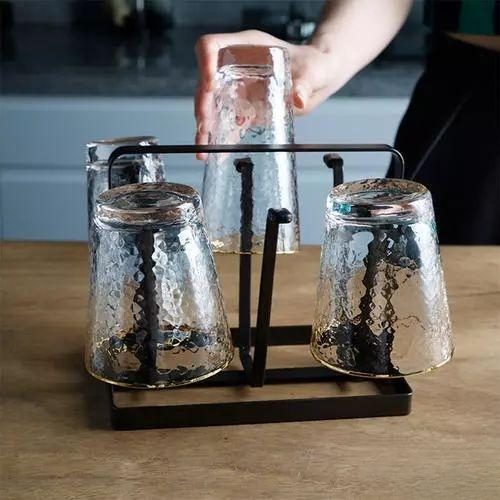
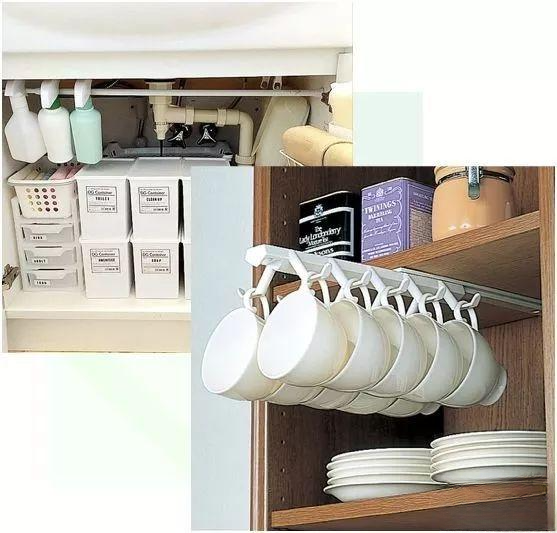
The ideal kitchen is:
No need to yell "Mom, where is my XXX?" when looking for something.
There are methods for storage, but the standards for tidiness vary from person to person.
Just like some people think that a kitchen that looks empty is better,
Some people think that the kitchen loses the flavor of life.
It's not about right or wrong, it's just a matter of habit.
The process of storage is actually a habit-forming plan.
How to judge whether your kitchen is what you want
This is all up to you, and has nothing to do with him or me.
How can we reduce the clutter in our home?
I think we need to take action in two aspects: 1. Be restrained and buy rationally; 2. Know how to let go.
1. Buy in moderation
I can fully understand the mentality of friends who always want to buy things. When shopping or visiting supermarkets, there is always an atmosphere that makes you want to buy things (even if the thing is not very necessary); and now there are all kinds of grass-planting apps and grass-planting videos, don’t they make you feel so beautiful and convenient, as if with them we can be as good-looking as in the video and become a certain expert!
But do you need to see your body and mind agree? Just like the handmade video barrage on station B
Brain: I got it.
Hand: No, you didn't.
Therefore, before buying something, we need to ask ourselves, "Do I really need it? Will I use it often after I buy it?" Try to avoid buying something and leaving it at home to collect dust.
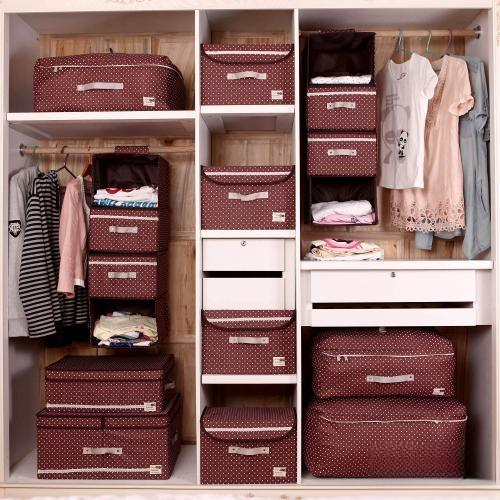
For example, I watched a video about organizing and storage that recommended using storage boxes to organize items by category. I was so impressed by how neat and tidy it looked, and how easy it was to find things, so I bought a bunch of boxes. I ended up spending the better part of a day organizing everything, but soon, in a hurry, I grabbed something and used it, but didn't put it away properly, leaving the mess behind. Furthermore, the boxes easily accumulated dust, and I often forgot what was in them, leading to duplicate purchases.
For someone like me who decides when to tidy based on my mood, the storage box method may not be very suitable for me. So when buying things, I have to make rational purchases based on my personal situation.
2. Letting Go
Organize and discard useless items regularly.
In "The Dansare-ri", Eiko Yamashita proposed the following: "Dansare-ri" - "Dansare-ri" (timing and organization): "Dansare-ri" - "Dansare-ri" (timing and organization): "Dansare-ri" - "Dansare-ri" (timing and organization) - when purchasing items, think about whether they are what you really need at the moment, and don't buy just because they are on sale; "Shesare-ri" - "Shesare-ri" (timing and organization) - discard unwanted items, and only choose items that you need at the moment and items that make you excited, and discard the rest; "Risare-ri" - repeatedly "Dansare-ri" (timing and organization) to break away from the pursuit of storing and displaying numerous items.
For old items that will no longer be used, you can transform them, give them away, donate them, etc. to make the best use of them.

For useful items, organize them so that they don't clutter and take up space. The house design can have as much hidden storage space as possible. You can adopt the following principles:
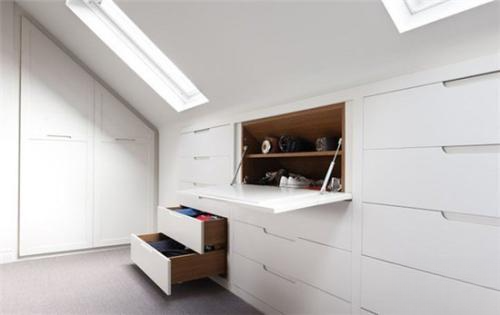
1. Distribute items evenly: Items should be stored nearby, and there should be storage space in every space.
3. Three-dimensional integration: Storage furniture should not be too much or too fragmented, and large built-in closets should be given priority.
4. 80/20 rule: Storage should have both hidden and exposed items, with the ratio of displayed items to hidden items being 2:8
Finally, you must develop the habit of putting things back to their original places after storage, otherwise you will end up like me, where the storage is only tidy temporarily and ends up in a mess.